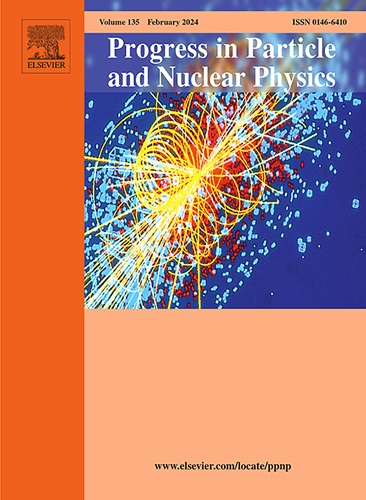支持光谱学的相对论原子结构计算
IF 17.9
2区 物理与天体物理
Q1 PHYSICS, NUCLEAR
引用次数: 0
摘要
理论可以在光谱实验的所有阶段提供重要的支持,从计划测量到结果的解释。这种支持对于具有挑战性的重、不稳定和超重元素的实验以及旨在测试粒子物理标准模型的精确测量尤其有价值。为了在实验环境中可靠和有用,理论预测应该基于高精度的计算。对于重元素,这样的计算必须在尽可能高的水平上处理相对论效应和电子相关性。相对论耦合簇被认为是对重质多电子原子和分子进行精确计算的最有效方法之一。这种方法是高度精确和通用的,可以用来获得能量和各种原子和分子的性质。此外,其稳健和透明的公式允许系统地提高计算结果的准确性,并为理论值分配不确定性。该方法的fock -空间耦合簇(FSCC)变体在光谱测量中特别有用,因为它提供了原子光谱和激发态性质的访问。在这篇综述中,我们详细介绍了相对论耦合簇方法及其FSCC变体。我们提供了用于精确计算和分配不确定性的计算程序的描述。突出的最近的例子应用于原子性质,集中在实验背景下,提出。最后,我们简要讨论了CC方法的未来发展和应用前景。本文章由计算机程序翻译,如有差异,请以英文原文为准。
Relativistic atomic structure calculations in support of spectroscopy
Theory can provide important support at all the stages of spectroscopic experiments, from planning the measurements to the interpretation of the results. Such support is particularly valuable for the challenging experiments on heavy, unstable, and superheavy elements and for precision measurements aimed at testing the Standard Model of particle physics. To be reliable and useful in experimental context, theoretical predictions should be based on high-accuracy calculations. For heavy elements, such calculations must treat both relativistic effects and electron correlation on the highest possible level. Relativistic coupled cluster is considered one of the most powerful methods for accurate calculations on heavy many-electron atoms and molecules. This approach is highly accurate and versatile and can be used to obtain energies and a variety of atomic and molecular properties. Furthermore, its robust and transparent formulation allows for systematic improvement of the accuracy of the calculated results and for assigning uncertainties on theoretical values. The Fock-space coupled cluster (FSCC) variant of this method is particularly useful in the context of spectroscopic measurements as it provides access to atomic spectra and properties of the excited states. In this review, we present in detail the relativistic coupled cluster approach and its FSCC variant. We provide a description of the computational procedure used for accurate calculations and for assigning uncertainties. Outstanding recent examples of application to atomic properties, focusing on the experimental context, are presented. Finally, we provide a brief discussion of the perspectives for future developments and applications of the CC approach.
求助全文
通过发布文献求助,成功后即可免费获取论文全文。
去求助
来源期刊

Progress in Particle and Nuclear Physics
物理-物理:核物理
CiteScore
24.50
自引率
3.10%
发文量
41
审稿时长
72 days
期刊介绍:
Taking the format of four issues per year, the journal Progress in Particle and Nuclear Physics aims to discuss new developments in the field at a level suitable for the general nuclear and particle physicist and, in greater technical depth, to explore the most important advances in these areas. Most of the articles will be in one of the fields of nuclear physics, hadron physics, heavy ion physics, particle physics, as well as astrophysics and cosmology. A particular effort is made to treat topics of an interface type for which both particle and nuclear physics are important. Related topics such as detector physics, accelerator physics or the application of nuclear physics in the medical and archaeological fields will also be treated from time to time.
 求助内容:
求助内容: 应助结果提醒方式:
应助结果提醒方式:


